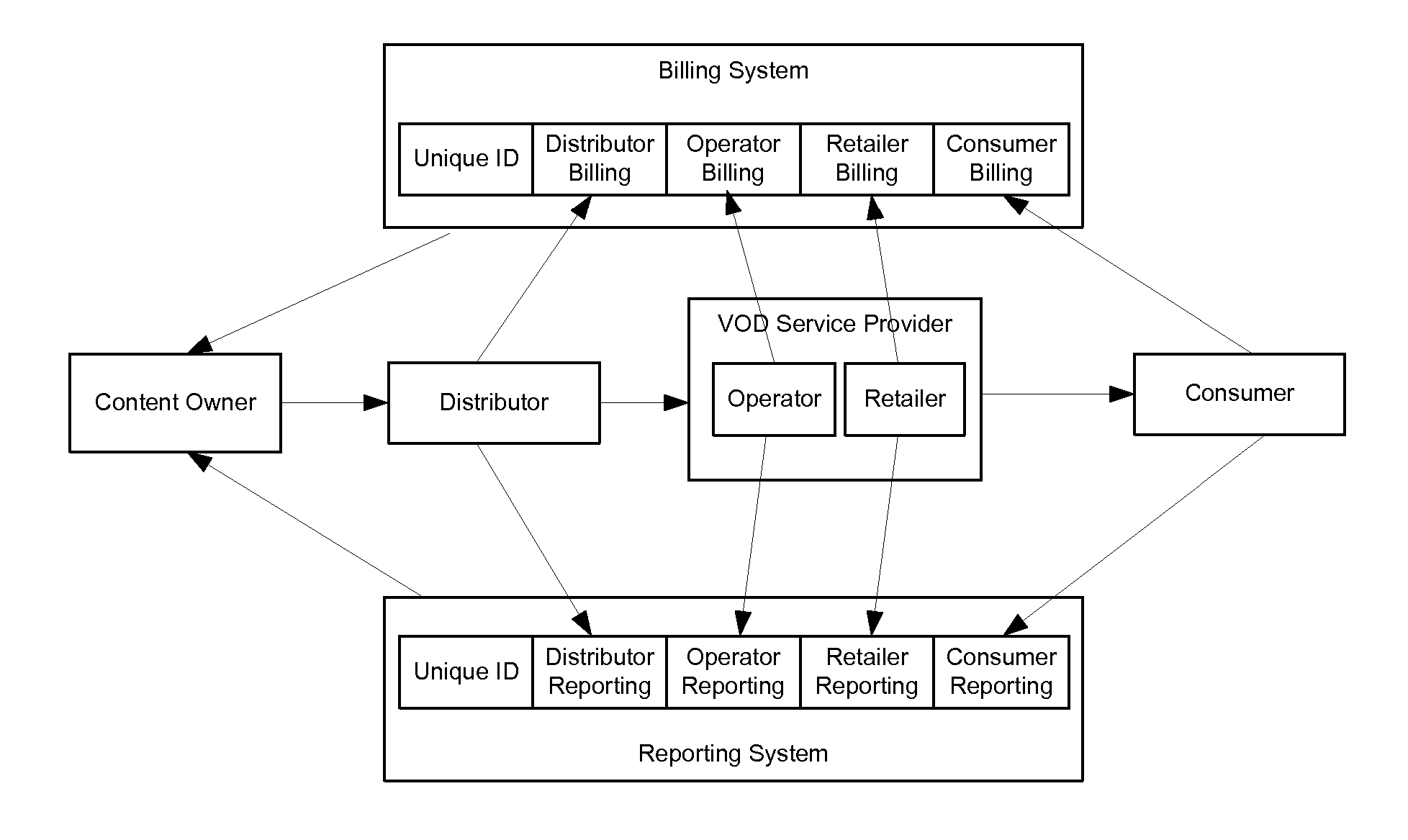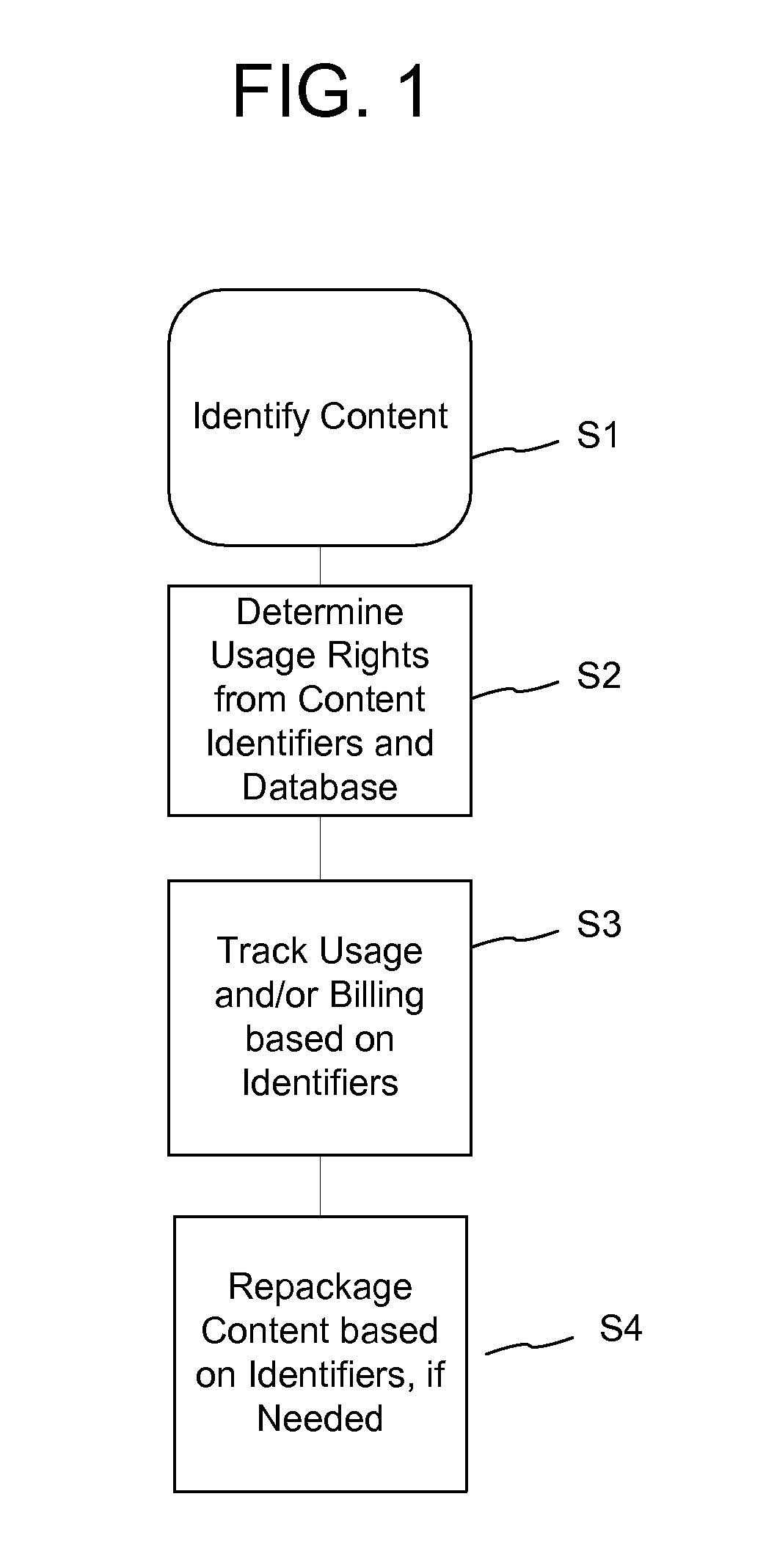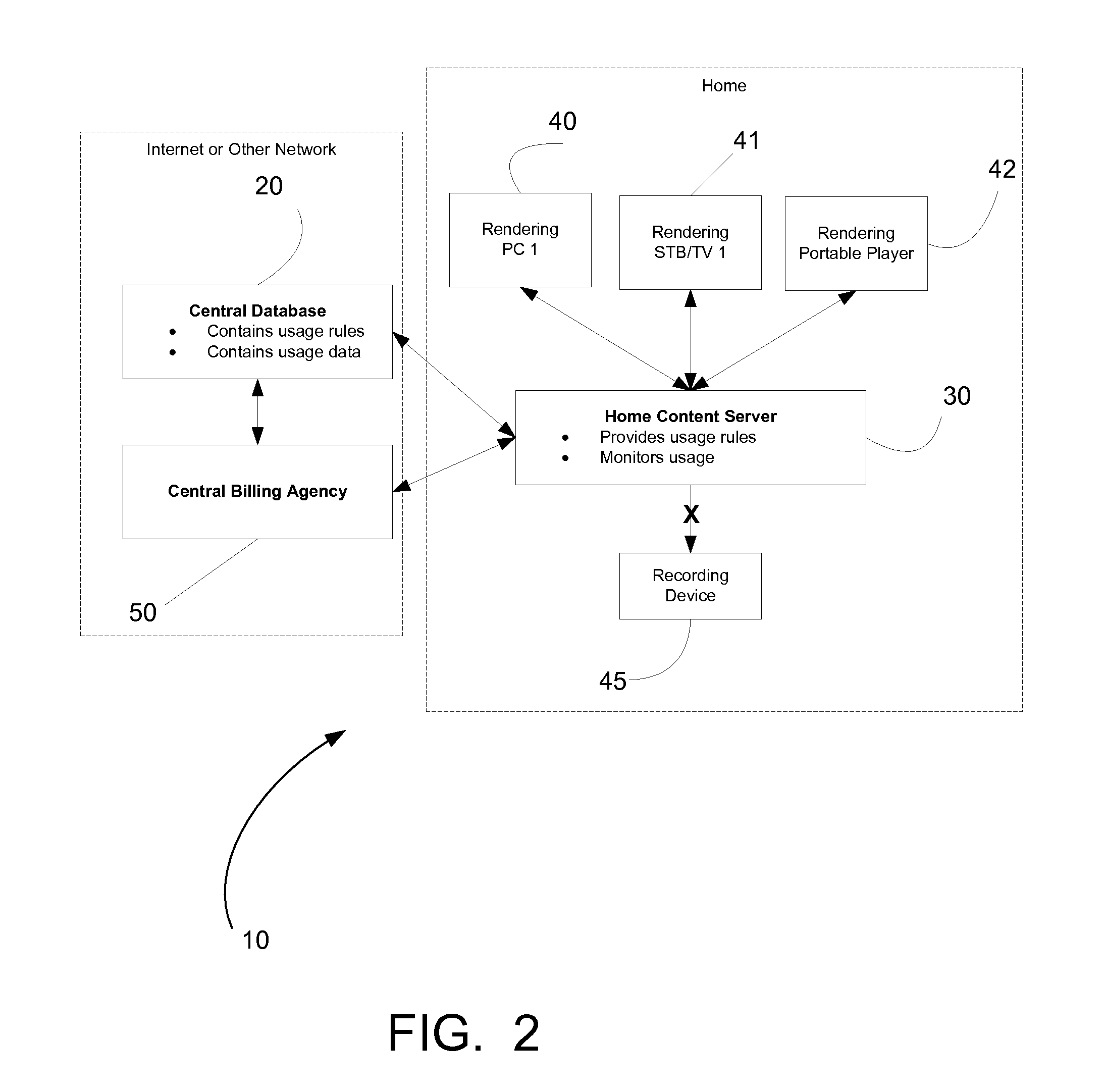Rights Management System and Methods
a management system and right technology, applied in the field of right management system and methods, can solve the problems of increasing difficulty in controlling and tracking the use of content, difficult to ensure that customers and service providers are getting the latest content, and difficult to control and track
- Summary
- Abstract
- Description
- Claims
- Application Information
AI Technical Summary
Benefits of technology
Problems solved by technology
Method used
Image
Examples
example
[0059] A distribution chain including a content owner A, VOD operator B, consumer C, and a video D is presented by way of example to illustrate one aspect of the present invention. Related, intelligently distributed databases are show in FIG. 9, where the central router database is located in mirrored locations for the central router, the content owner A database is located in mirrored locations within the content owner A's network, and the VOD operator B database is located in mirrored locations within the VOD operator B's network.
[0060] For this example we assume that video D includes a digital watermark embedded therein. The digital watermark preferably includes a unique ID that at least uniquely identifies the video as video D. When consumer C wants to watch video D, the consumer's player (or plug-in to the player, or central home server, etc.) decodes the digital watermark to extract the unique ID. The extracted unique ID is communicated to the central database. The central da...
PUM
| Property | Measurement | Unit |
|---|---|---|
| physical | aaaaa | aaaaa |
| surface textures | aaaaa | aaaaa |
| optical scan | aaaaa | aaaaa |
Abstract
Description
Claims
Application Information
 Login to View More
Login to View More - R&D
- Intellectual Property
- Life Sciences
- Materials
- Tech Scout
- Unparalleled Data Quality
- Higher Quality Content
- 60% Fewer Hallucinations
Browse by: Latest US Patents, China's latest patents, Technical Efficacy Thesaurus, Application Domain, Technology Topic, Popular Technical Reports.
© 2025 PatSnap. All rights reserved.Legal|Privacy policy|Modern Slavery Act Transparency Statement|Sitemap|About US| Contact US: help@patsnap.com



